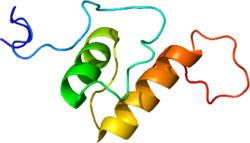| MRTFA | |||||||||||||||||||||||||||||||||||||||||||||||||||
|---|---|---|---|---|---|---|---|---|---|---|---|---|---|---|---|---|---|---|---|---|---|---|---|---|---|---|---|---|---|---|---|---|---|---|---|---|---|---|---|---|---|---|---|---|---|---|---|---|---|---|---|
 | |||||||||||||||||||||||||||||||||||||||||||||||||||
| |||||||||||||||||||||||||||||||||||||||||||||||||||
| Identifiers | |||||||||||||||||||||||||||||||||||||||||||||||||||
| Aliases | MRTFA , BSAC, MAL, MRTF-A, megakaryoblastic leukemia (translocation) 1, MKL, MKL1, myocardin related transcription factor A | ||||||||||||||||||||||||||||||||||||||||||||||||||
| External IDs | OMIM: 606078; MGI: 2384495; HomoloGene: 32487; GeneCards: MRTFA; OMA:MRTFA - orthologs | ||||||||||||||||||||||||||||||||||||||||||||||||||
| |||||||||||||||||||||||||||||||||||||||||||||||||||
| |||||||||||||||||||||||||||||||||||||||||||||||||||
| |||||||||||||||||||||||||||||||||||||||||||||||||||
| |||||||||||||||||||||||||||||||||||||||||||||||||||
| |||||||||||||||||||||||||||||||||||||||||||||||||||
| Wikidata | |||||||||||||||||||||||||||||||||||||||||||||||||||
| |||||||||||||||||||||||||||||||||||||||||||||||||||
MKL/megakaryoblastic leukemia 1 (also termed MRTFA/myocardin related transcription factor A) is a protein that in humans is encoded by the MKL1 gene. [5] [6] [7] [8]





